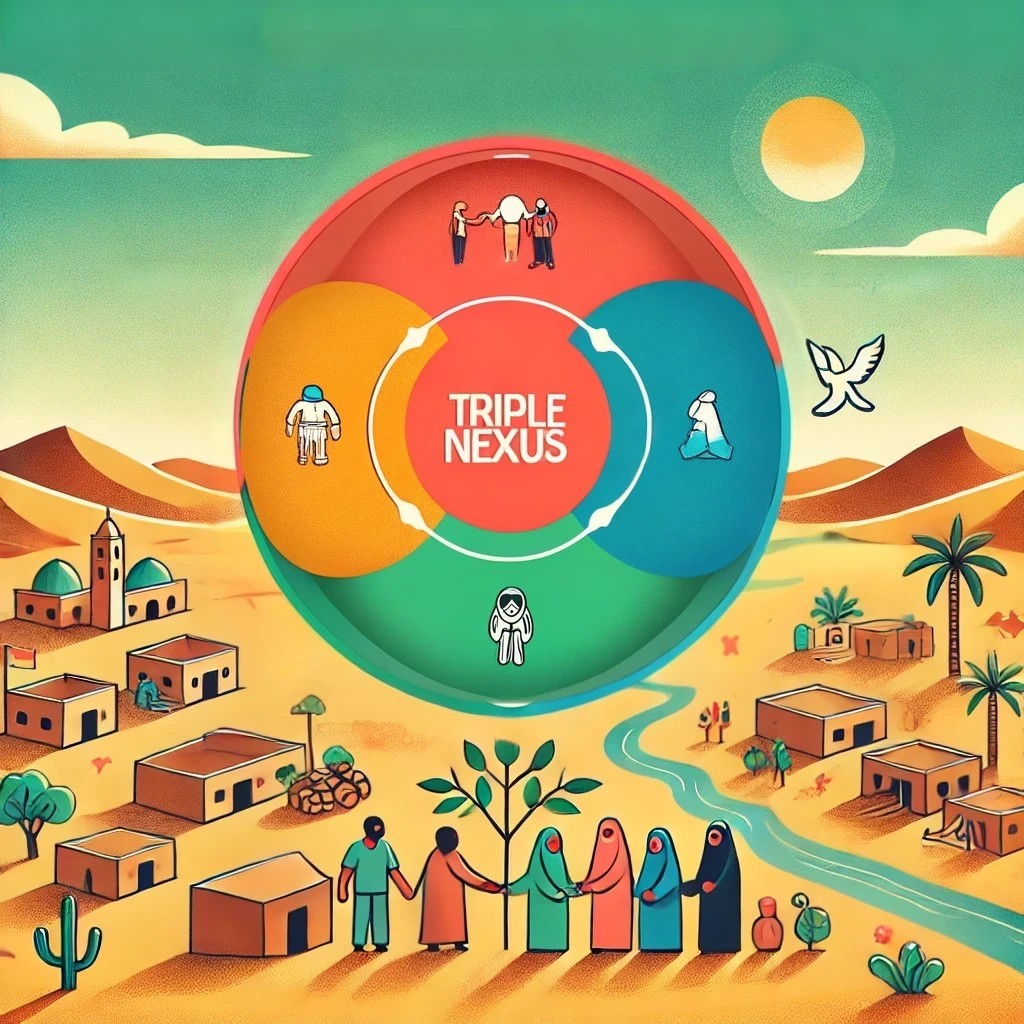The Impact and Innovation of Insider Mediation: A Community-Centric Approach to Conflict Resolution
Insider mediation isn’t a new concept; it’s a rebranding of local mediation led by local actors with direct relationships and influence over the parties in conflict. Unlike the Western model, which emphasizes mediator neutrality and external support, insider mediators are deeply connected to the conflict. They often belong to the same community or even the same families as the conflicting parties, leveraging their influence to drive agreements beneficial not only to the disputing parties but also to the broader community.
My journey with insider mediation began years ago at a workshop organized by the EU and UNDP. Initially, I was skeptical, having just graduated from a conflict transformation and peacebuilding program at Eastern Mininote University, where I was steeped in the Western model’s emphasis on mediator neutrality. However, as I gained hands-on experience working in Yemen, it became clear that the Western model often falls short in complex, localized conflicts.
As the conflict in Yemen intensified and war broke out, the idea emerged to combine insider mediators with small-scale peace-oriented development interventions, leading to the Community Dialogue Approach (CGA). Over the past eight years, this approach has grown from a small project with a budget of less than a million dollars to over eight projects totaling more than fourteen million dollars. The approach has expanded beyond Yemen to Afghanistan, Tunisia, Lebanon, and East Africa, fostering community stabilization and social cohesion through several innovative strategies. Here are some key elements each come with its own challenges that can be explored in future posts:
- Strategic Selection of Insider Mediators: We carefully curate a mix of individuals, combining young mediators with experienced elders, women with men, and marginalized groups with other community members. This mix fosters collaboration, breaks community norms and restrictions, and allows for learning and generational exchange.
- Focus on Specific Conflict Themes: Addressing conflicts related to youth, women, or resources like water enables a more focused approach. Integrating technical and mediation capacities results in dramatic community changes. For instance, in youth-related conflicts, communities and mediators work together to understand the root causes and create a more peace-conducive environment for youth while allowing youth themselves to be agents for peace among their peers.
- Integration of Small-Scale Peace Interventions: These interventions serve as incentives for communities and mediators, providing tangible results that both can celebrate. They encourage the escalation of peace mediation efforts to address more complex issues, though this should be done gradually.
- Wider Inclusion of Other Actors: Local authorities and the private sector often support these efforts once they see tangible results, bringing additional funding and resources to the small-scale interventions.
Insider mediation has proven to be a powerful tool for facilitating community stabilization and social cohesion. Each step of its implementation is designed to achieve various aspects of peacebuilding and stabilization.
One point still pending further exploration is the level at which insider mediators cease to be effective. At what level do mediators stop being insiders? Can insider mediators be effective at the sub-national and national level? Even more ambitious, can insider mediators be effective at the regional level? A dear friend argues, “Well, they are insiders of the region! And comparatively, they enjoy more knowledge and experience to drive a peace process.”
What do you think? Do you believe in the effectiveness of insider mediators? At what level do you think their influence diminishes? How can we regulate their neutrality? Is that even an issue in such an approach?

Did the Nexus Reach Maturity in MENA?
The triple nexus—bringing together humanitarian, development, and peace (HDP) efforts—has gained prominence globally. However, its implementation in the Middle East and North Africa (MENA) region raises questions about maturity, effectiveness, and its ability to address prolonged crises.
From years of working in MENA on conflict sensitivity and nexus programming, I’ve witnessed successes and failures. While the nexus concept resonates strongly with donors, implementation at the field level is far more challenging. Coordination among stakeholders is often fragmented, and few organizations successfully operate across all three sectors. The rise of “multi-mandated” organizations offers a glimmer of hope, but operationalizing the nexus requires addressing significant systemic barriers—a topic I’ll explore further in an upcoming article.
The Triple Nexus in MENA: A Regional Lens
The MENA region’s crises demand approaches that integrate immediate relief with long-term solutions. Iraq, Libya, Yemen, and Lebanon offer distinct perspectives on the application of the nexus.
In Iraq, the nexus has been used to transition from emergency humanitarian assistance to sustainable development. Despite this ambition, donor-driven silos and misaligned priorities often limit its effectiveness. The assumption that donors work seamlessly together is frequently disproven, as differing political positions and limited presence on the ground create obstacles. This lack of coordination among donors has led to fragmented implementation, particularly when it comes to linking development with peacebuilding efforts.
Libya provides a different narrative, where top-down strategies dominate, and local actors are largely excluded from planning processes. Local organizations are often handed predefined frameworks to implement without input or adaptation, resulting in disjointed service delivery and reduced community engagement. This exclusion weakens the sustainability of nexus initiatives and undermines trust among local stakeholders.
Lebanon, with its unique challenges of economic collapse and political instability, presents a highly complex environment for nexus programming. Efforts to integrate relief and recovery are hampered by the dysfunction of governance structures that should be steering these programs. The inability to rely on local institutions for recovery initiatives leaves the nexus dependent on international actors, who often struggle to align long-term objectives with immediate needs.
Do We Have Enough Experience in MENA?
The application of the nexus in MENA provides valuable lessons but also reveals significant gaps.
In Iraq, efforts to align humanitarian responses with development frameworks have shown promise, particularly in addressing the needs of internally displaced persons (IDPs). However, peacebuilding remains underfunded and insufficiently integrated into broader strategies. This imbalance limits the potential for comprehensive solutions and highlights the coordination challenges across sectors.
Libya’s experience underscores the risks of rushed timelines and insufficient local ownership. The exclusion of national NGOs and local authorities from strategic planning processes has resulted in frameworks that fail to reflect on-the-ground realities, undermining their sustainability.
Lebanon illustrates how systemic fragility complicates nexus programming. While efforts are being made to bridge relief and recovery, the chronic lack of trust in governance structures has stifled progress. Even the best-designed nexus programs struggle to achieve meaningful results without functional institutions.
Distinguishing the Nexus from Conflict Sensitivity and “Do No Harm”
Conflict sensitivity and “Do No Harm” principles are essential to reducing harm and preventing tensions in humanitarian and development interventions. However, the triple nexus goes further, aiming to align immediate aid efforts with long-term stability and peacebuilding goals.
In practice, achieving this alignment is particularly challenging in MENA. For instance, in Iraq, humanitarian actors often resist transitioning responsibilities to development-focused organizations, citing concerns over stability and continuity of aid delivery. This reluctance creates bottlenecks that slow progress. In Yemen, limited donor presence on the ground due to security risks further complicates the nexus’s application. Donors often rely on humanitarian actors, who tend to paint a grim picture of the context, discouraging investments in long-term development. These dynamics make envisioning a nexus approach almost impossible without a more stable and predictable operational environment.
The Critical Role of Donor Coordination in MENA
Effective donor coordination is critical for the success of nexus programming in MENA. In Iraq, the absence of unified donor strategies has resulted in geographically and sectorally disjointed programs. This lack of cohesion undermines collective outcomes and creates inefficiencies in resource allocation.
In Lebanon, while donor coordination has helped link relief with recovery efforts, short-term funding cycles continue to hinder meaningful progress. The region’s reliance on humanitarian grants, which prioritize immediate needs over structural challenges, reflects a broader failure to address the root causes of fragility.
Unrealistic Expectations at the Implementation Level
The nexus is often seen as a comprehensive solution capable of addressing MENA’s complex crises. However, this oversimplification ignores the realities of implementing such an approach in fragile contexts.
In Libya, for example, peacebuilding remains an underdeveloped component of nexus strategies. The lack of integration between sectors creates a gap that prevents programs from achieving their full potential. Similarly, in Iraq, weak governance and fragmented institutional capacities make it unrealistic to expect a seamless transition between humanitarian and development efforts. Without a clear and realistic understanding of these limitations, the nexus risks becoming a lofty ideal rather than a practical framework.
Lessons Learned and Future Directions
While the triple nexus offers a compelling vision for addressing protracted crises, its success in MENA hinges on context-specific strategies, robust donor coordination, and the inclusion of local actors. Achieving maturity will require stakeholders to commit to flexible, long-term funding and realistic goals tailored to the region’s unique challenges. By addressing these foundational issues, the nexus could become a transformative tool for fostering resilience and stability across MENA’s most vulnerable communities.
